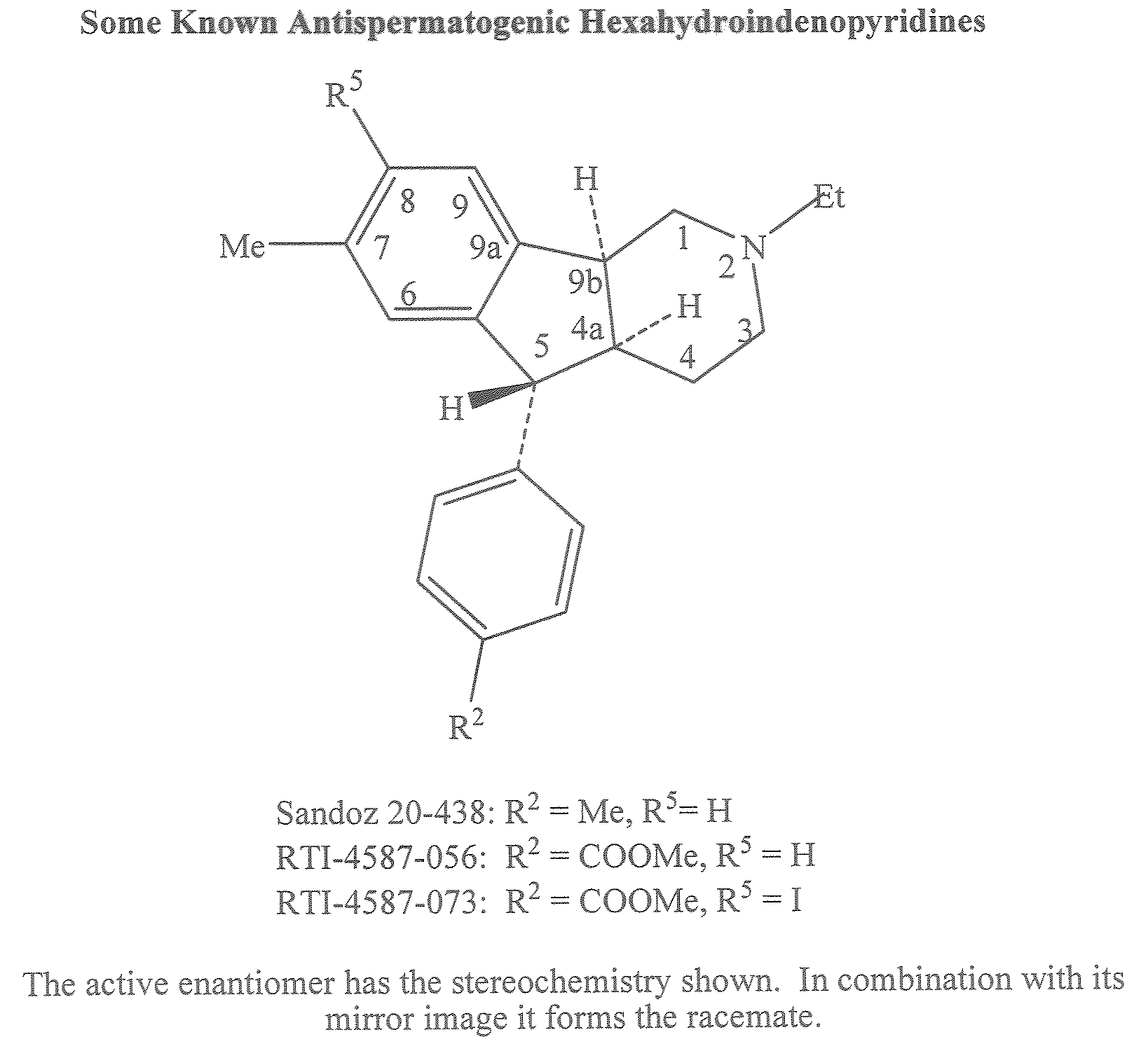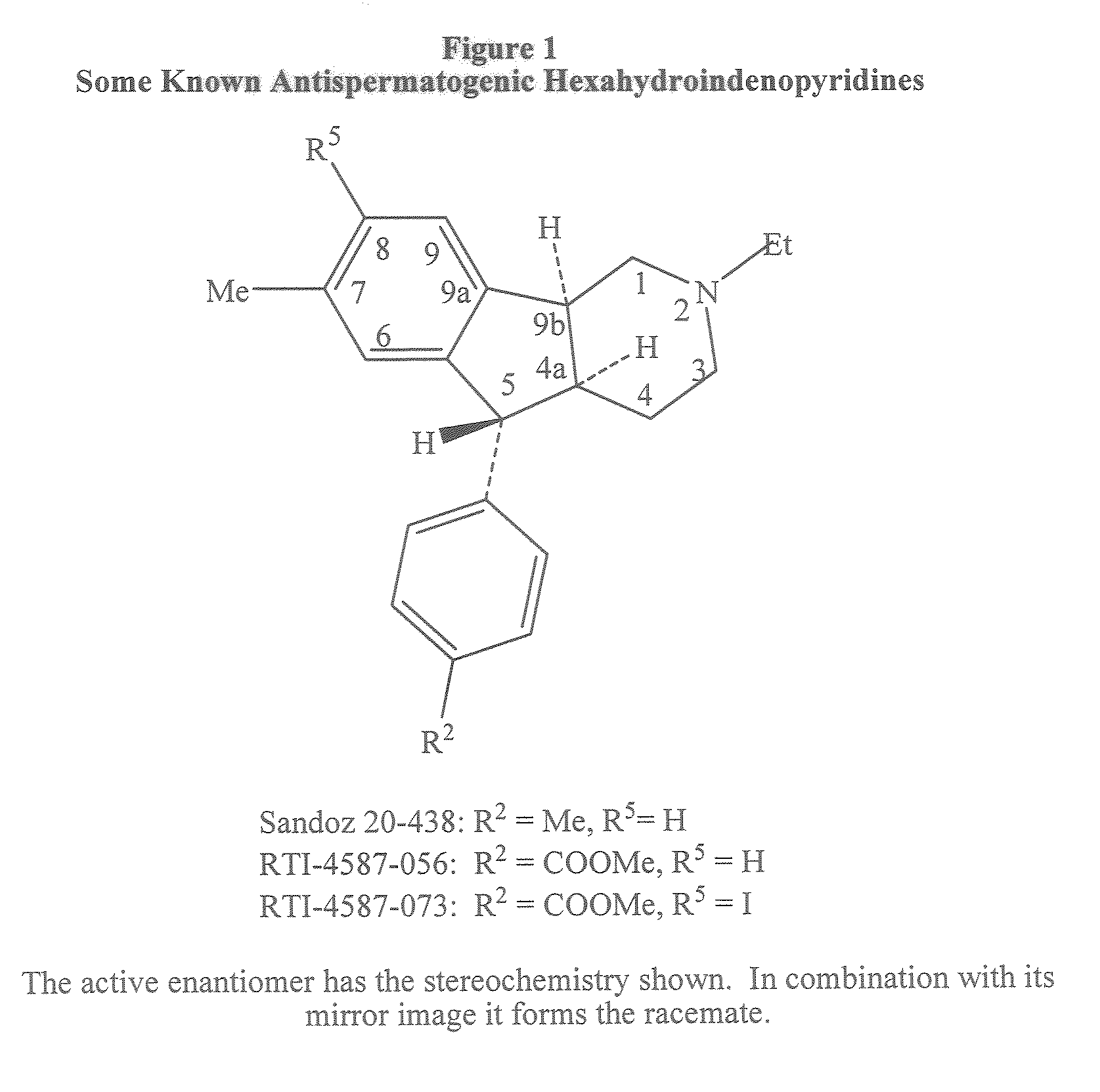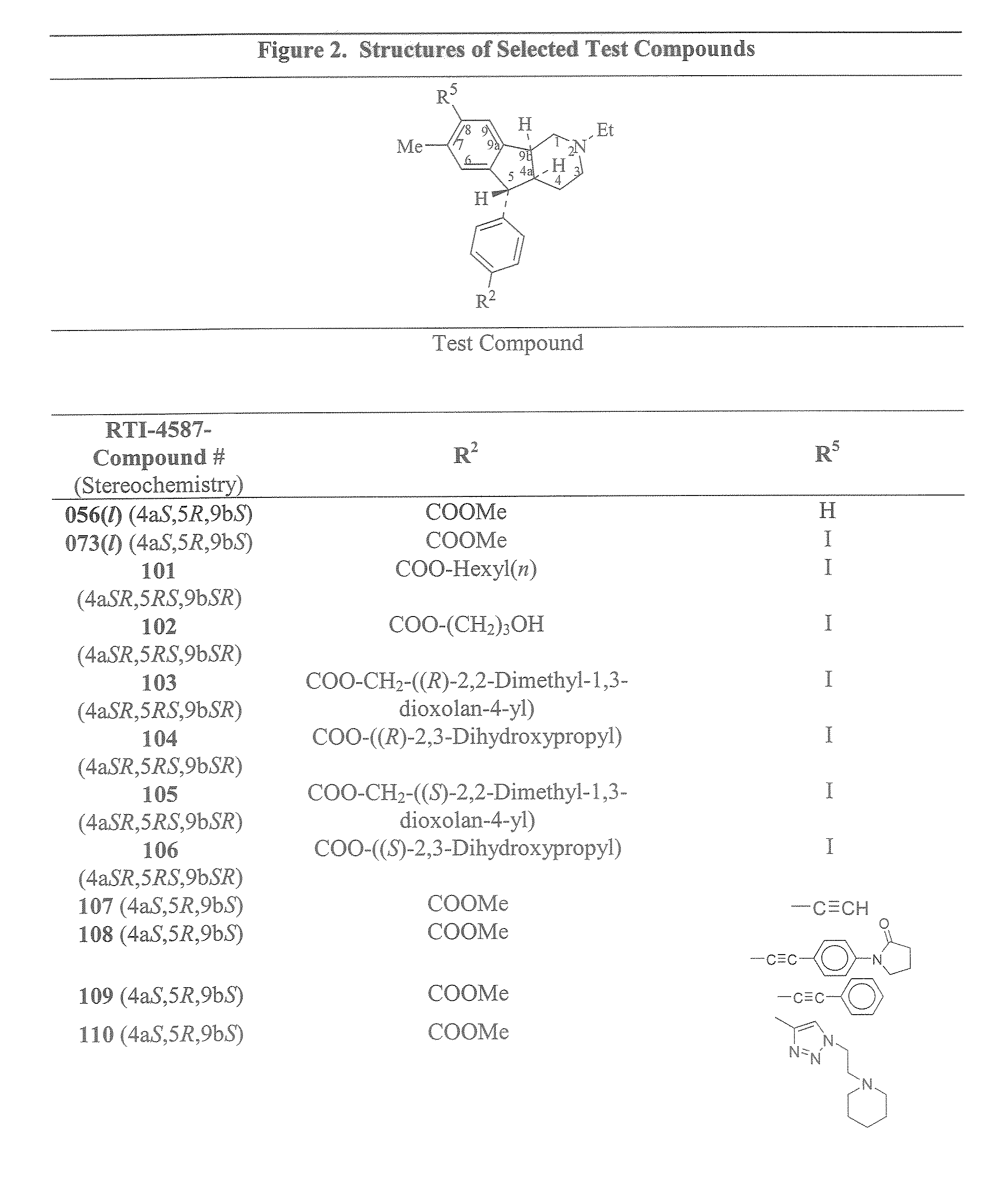Antispermatogenic, spermicidal and/or antifungal composition and methods of using the same
- Summary
- Abstract
- Description
- Claims
- Application Information
AI Technical Summary
Benefits of technology
Problems solved by technology
Method used
Image
Examples
example 1
(4aS, 5R, 9bS)-5-(4-Carbomethoxyphenyl)-2-ethyl-8-ethynyl-2,3,4,4a,5,9b-hexahydro-7-methyl-1H-indeno[1,2-c]pyridine [A1a (A1 where R1=Et, R2═COOMe, R3═H, R4=Me)]
[0242]The hydrochloride salt of (4aS, 5R, 9bS)-5-(4-Carbomethoxyphenyl)-2-ethyl-2,3,4,4a,5,9b-hexahydro-8-iodo-7-methyl-1H-indeno[1,2-c]pyridine [A3a.HCl, (A3 HCl where R5=Et, R2═COOMe, R3═H, R4=Me, R5═I)] (1.1 g) (Cook, C. E.; Jump. J. M.; Zhang, P.; Stephens, J. R.; Lee, Y.; Fail, P. A.; Anderson, S. A. J. Med. Chem., 1997, 40, 2111-2112; U.S. Pat. No. 5,319,084) was partitioned between aqueous sodium bicarbonate (50 mL, 5% by wt.) and methylene chloride (3×30 mL). The extract was washed with water (30 mL) and brine (30 mL) and dried over sodium sulfate. Filtration and solvent evaporation yielded the free base A3a (1.0 g, 98% yield): TLC Rf 0.21 on Whatman® LK C18F. methanol-water (9:1, v / v), For visualization, the TLC plates were viewed under short ultraviolet light and then stained with iodine; 1H NMR (CDCl3, 300 MHz) δ ...
example 2
(4aS, 5R,9bS)-5-(4-Carbomethoxyphenyl)-2-ethyl-2,3,4,4a,5,9b-hexahydro-7-methyl-8-(1-(2-piperidin-1-yl)ethyl)-1H-1,2,3-triazole-4-yl)-1H-ideno[1,2-c]pyridine [A1a (A2 where R1=Et, R2═COOMe, R3═H, R4=Me, ABG=N—N═N, R7═2-(N-piperidino)ethyl))].
[0244]1-(2-Azidoethyl)piperidine was obtained by a procedure similar to that described by Converso, A.; Burrow K.; Marzinzik, A.; Sharpless, B. K.; Finn. M. G. J. Org. Chem. 2002, 66 (12), 4386-4392. To sodium azide (2.00 g, 30.8 mmol, MW 65.01) dissolved in N,N-dimethylformamide (DMF, 30 mL) was added 1-(2-chloroethyl)piperidine hydrochloride (3.77 g, 20.4 mmol) and potassium hydroxide (1.38 g, 24.6 mmol). The stirred reaction mixture was refluxed for 2 h, cooled to room temperature, poured into water at 0-5° C. and extracted with ethyl ether (50 mL and 4×20 mL). The extract was washed with brine (50 mL) and dried over sodium sulfate. Filtration and solvent evaporation yielded crude product (2.77 g) that contained starting material. Treatment o...
example 3
(4aS, 5R,9bS)-5-(4-Carbomethoxyphenyl)-2-ethyl-2,3,4,4a,5,9b-hexahydro-7-methyl-8-(2-phenylethynyl)-1H-indeno[1,2-c]pyridine [A5a (A5, where R1=Et, R2═COOMe, R3, R4=Me, K7=phenyl)]
[0247]Under anhydrous conditions in an argon atmosphere, tetrakis(triphenylphosphine)palladium(0) (5.8 mg, 0.005 mmol), was added to a 2-neck flask fitted with a magnetic stirring bar, stopper, reflux condenser and inlet tube for dry argon. CuI (2.9 mg, 0.015 mmol), 0.5 mL of dry benzene and 75 μL of iodobenzene (137 mg, 0.67 mmol) were added in succession and the mixture stirred for 5 min, whereupon 1.3 mL of Et3N was added. The ethynyl compound Ala (70.2 mg. 0.19 mmol) was dissolved in 1 mL of dry benzene and added to the reaction mixture with a 0.3 mL rinse of dry benzene. The mixture was stirred and heated at ca. 45° C. for 1 hr. Monitoring by TLC (Whatman® LK C18F reverse phase plates developed with 90 (MeOH:Et3N, 100:1): 10H2O (v / v) showed the reaction to be complete. The mixture was added to 7.5 mL ...
PUM
| Property | Measurement | Unit |
|---|---|---|
| Volume | aaaaa | aaaaa |
| Volume | aaaaa | aaaaa |
| Molar density | aaaaa | aaaaa |
Abstract
Description
Claims
Application Information
 Login to View More
Login to View More - R&D
- Intellectual Property
- Life Sciences
- Materials
- Tech Scout
- Unparalleled Data Quality
- Higher Quality Content
- 60% Fewer Hallucinations
Browse by: Latest US Patents, China's latest patents, Technical Efficacy Thesaurus, Application Domain, Technology Topic, Popular Technical Reports.
© 2025 PatSnap. All rights reserved.Legal|Privacy policy|Modern Slavery Act Transparency Statement|Sitemap|About US| Contact US: help@patsnap.com



